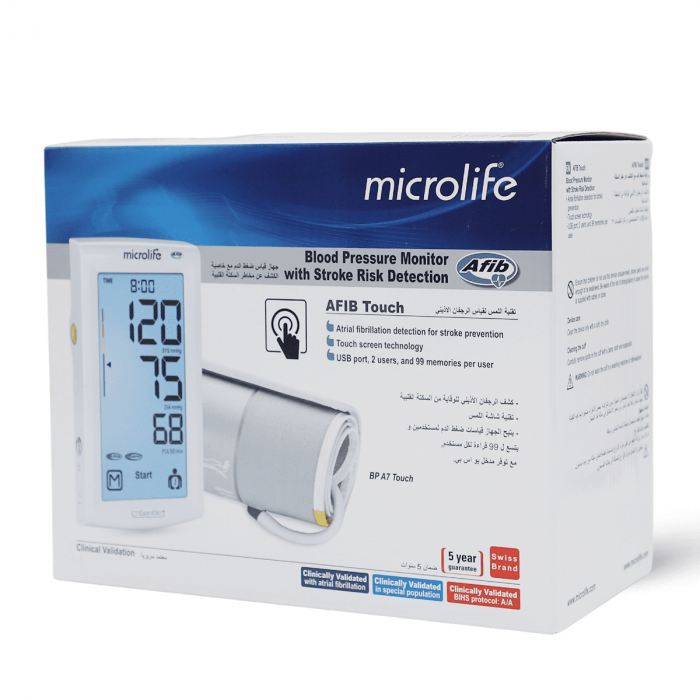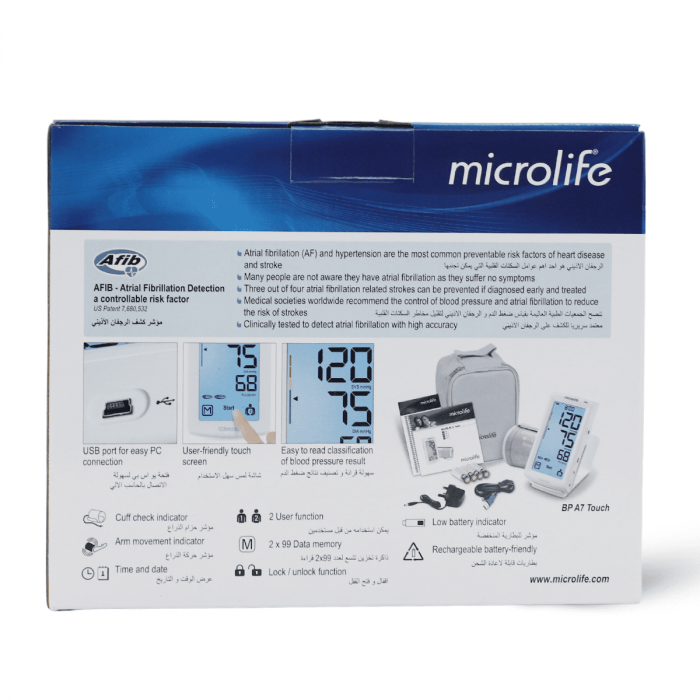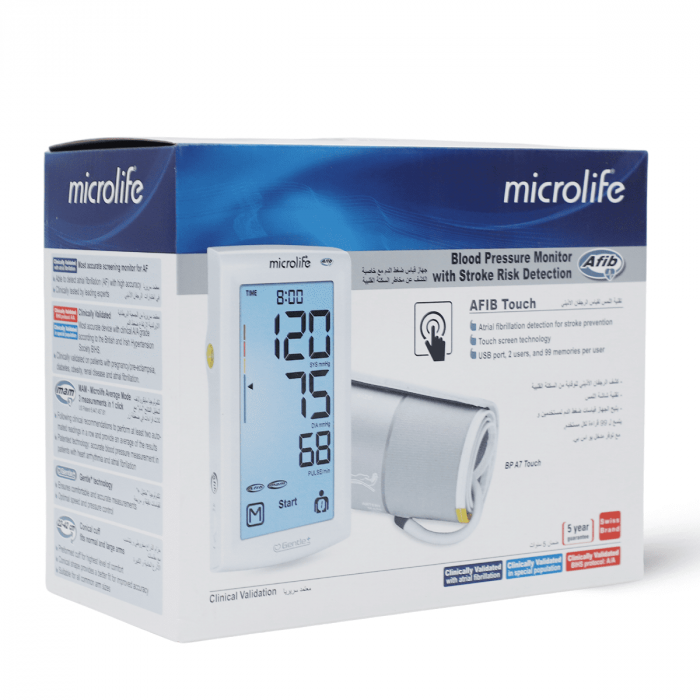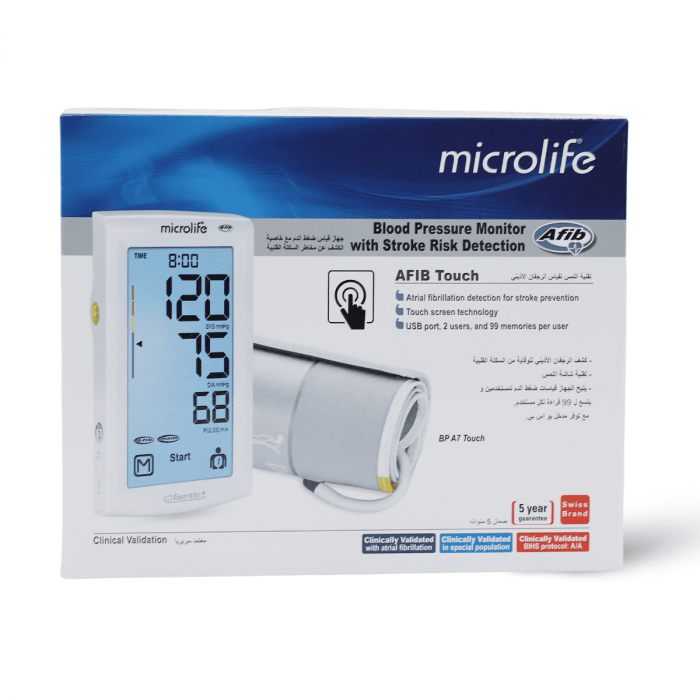Product Name
- Microlife, a device that measures blood pressure
Usage
- Easy-to-use blood pressure monitor that delivers accurate and reproducible results.
Product Features
- Touch screen
- big screen
- Cardiac arrest and atrial fibrillation risk detector
- Low battery indicator
- Rechargeable battery
- Cuff check indicator
- arm movement indicator
- Display time and date
- Can be used by two people
- Data memory up to 2 x 99 readings
- USB port for connection to computer
Browse Microlife products
Instructions for use
- Make sure to follow these instructions before blood pressure:
- Stop any exercise 30 minutes before measuring.
- Do not drink any caffeinated beverages or smoke 30 minutes before measuring.
- Empty your bladder of urine.
- Take a 5-minute break before measuring, keep your back straight, remove any tight clothing from the measuring area, and do not cross your legs.
- Do not talk during the measurement or during rest time.
- The measurements should be taken twice with a two-minute interval between them, then take the average of the two measurements.
- To get accurate results, follow these steps:
- Before measuring your blood pressure, you should get enough rest and not suffer from any tension or anxiety before measuring your blood pressure.
- Your feet should be on the floor and you should be sitting upright in a chair with your back against the back of the chair.
- Place your arm on the table and just make sure your hand and arm are relaxed on the table. It is important not to clench your fist tightly when measuring your blood pressure.
- Make sure you can fit two fingers under the armband when it is on your upper arm, then adjust it so that the tube extends to the middle of your arm or slightly to the right of it.
- When you check your blood pressure, do not talk and just relax. Press the device's power button, then press the start button.
- You will feel the cuff inflate very quickly. It may be temporarily uncomfortable as the cuff inflates and deflates automatically, but this will only be for a short time. You can quickly deflate the cuff by pressing the “Stop” button if it becomes too painful or uncomfortable.
- Write down the reading as soon as you receive it. These days, many blood pressure monitors have an internal memory.
- A few minutes after measuring your blood pressure, it's a good idea to check it again to make sure the readings are similar and accurate.
- If your doctor or pharmacist has told you to check your blood pressure, do so twice a day, in the morning and evening, and then make an appointment to follow up with your doctor or pharmacist.
What is high blood pressure?
- High blood pressure is a common condition in which the long-term force of blood pressure against the walls of the arteries is high enough that it may eventually cause health problems, such as heart disease.
- Lowering blood pressure reduces the risk of fatal and nonfatal cardiovascular diseases, especially strokes and myocardial infarction.
Helpful Tips to Lower Blood Pressure
- You will also find the following non-drug treatments effective in lowering blood pressure:
- Lose weight and watch your waistline
- Exercise regularly.
- Follow a healthy diet
- Reduce the amount of sodium (found in table salt) in your diet.
- Make sure to quit smoking
- Reduce caffeine
- Avoid stress and pressure
- Monitor your blood pressure at home regularly using blood pressure monitors.
- Garlic or omega-3 supplements have been shown to be effective in lowering blood pressure in patients with hypertension.
- Follow up with your doctor on your blood pressure levels on an ongoing basis.
Normal blood pressure levels
- Normal blood pressure is less than 120/80 mmHg.
- High blood pressure: When the systolic pressure reading is 120-129 mmHg and the diastolic is less than 80 mmHg.
- Level 1 Hypertensive Patient: When the systolic blood pressure reading is 130-139 mmHg or diastolic blood pressure reading is 80-89 mmHg
- Level II hypertensive patient: When the blood pressure reading is equal to 140/90 mm Hg or higher
- Hypertensive crisis is a serious condition that requires immediate hospitalization if blood pressure is 180/120 mmHg or higher.





